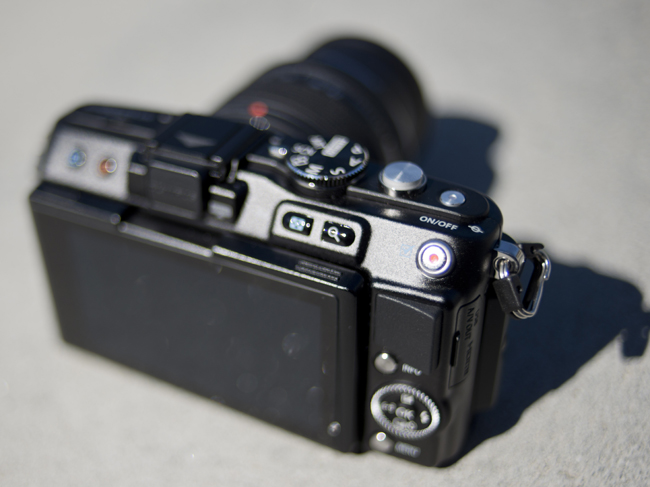In October, we had a huge month dedicated to all the great mirrorless cameras that are out there. While the Fuji X-Pro 1’s technology was promising, the Olympus OM-D E-M5 took away the best mirrorless camera award. While it’s all worth it, the OM-D E-M5 is a bit pricey, and therefore, not for everyone. So how do some of Olympus’ other cameras line up?
Today, we have the PEN E-PL5.
First Impressions:
The Olympus PEN E-PL5 is, in many ways, quite similar to other Olympus mirrorless systems, staying true to the general design and button aesthetics of other models by Olympus, which seems only natural. However, you can feel the difference between this and the pricier E-M5. I’ll save some time by putting the moral of the story up front: you get what you pay for. But comparing the E-PL5 to the best in its class isn’t exactly fair. This camera is well-priced for what it is and will still save you quite a bit over the EM-5, so if you’re not still holding on to Google stock that you bought back in 2004, you should still definitely consider the E-PL5.
Handily, the E-PL5 has a foldout screen that makes taking photos with the camera above your head or low to the ground a breeze. That’s a nice feature for a camera that is light enough to hold with one hand on a regular basis. Many cameras these days, this one included, make me feel a little more comfortable with this feature, which I used to view as another moving part to repair, as they’re becoming more sturdy.

I’m still a fan of the micro-four-thirds format, because if you have to go small, why not choose a format for which plenty of manufacturers have built lenses? It just makes sense. And in the end, it’s not that much smaller than the largest sensor you could fit into a body this size.
The Good Stuff:
The E-PL5 has excellent image quality for its category. Shooting at relatively high ISO is possible with acceptable noise. At 1250 ISO, noise is still controlled quite well. Color noise straight out of the camera on a raw file is practically gone (I couldn’t see any). The 16-megapixel sensor seems to be a perfect balance between image size and pixel size, leading to better low-light performance while still providing enough data to edit and print with a decent amount of flexibility.
And autofocus with certain lenses is fine, too. However, using the 60mm macro lens to shoot a concert far away is not recommended -- there was quite a bit of hunting between all distance settings on that lens. The 60mm is great for its true purpose, though, but more on that in another article to come.
In-camera image stabilization also is a huge contributor to the quality of images with this camera. You don't get all the bells and whistles of the OM-D E-M5, but you get a lot of them -- this one included. Forget looking for image stabilization on your lenses -- this has you covered no matter what lens you use.
Something that I absolutely love Olympus for doing is including small accessories with the camera. An optionally added (but included) grip gives better control when holding the camera in the right hand. Likewise, this camera also came with the little external flash to throw on the hot shoe. It’s great not having to pay another $100 for these things that really don’t cost the company that much anyway. Bravo.
The Not-So-Good Stuff:
I already mentioned autofocus issues with the 60mm lens when trying to use it as a normal lens in low light, which is still a bit of a bummer; but with the kit lens, there were few issues. Autofocus performance overall is quite snappy for what at first might seem like a glorified point-and-shoot.
As with some of their other models, I’m not a huge fan of Olympus’ touch screen. I’m not a bit fan of touch screens on any camera I’ve used (except in the case of the Canon EOS-M, but that’s another story). Perhaps it’s because my fat fingers just don’t quite work on the little spaces I’m supposed to press on in various modes. But I do like the simple one-click photo feature. Maybe I’ll warm up to it eventually...

Overall:
For two-thirds to half the price of the OM-D E-M5, depending on the kit you go for, it’s more than something to just consider. It’s still-excellent image quality, small size, and robust build make it among the best in its category -- even better, dare I say, than some DSLRs in its price range.
You can order the Olympus PEN E-PL5 on B&H or Amazon for $650 with the kit 14-42mm lens.
If you decide to spring for the OM-D E-M5, you can order it with the same lens for $1099 or with a 12-50mm lens for $1299 here.








